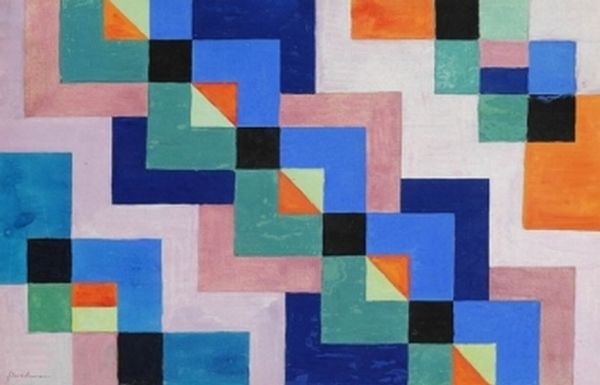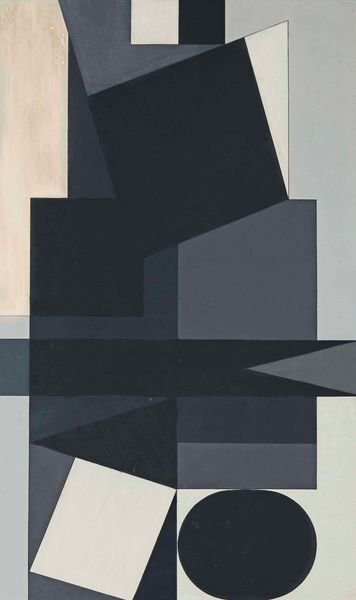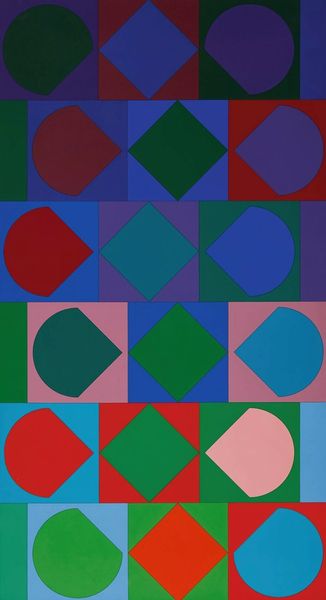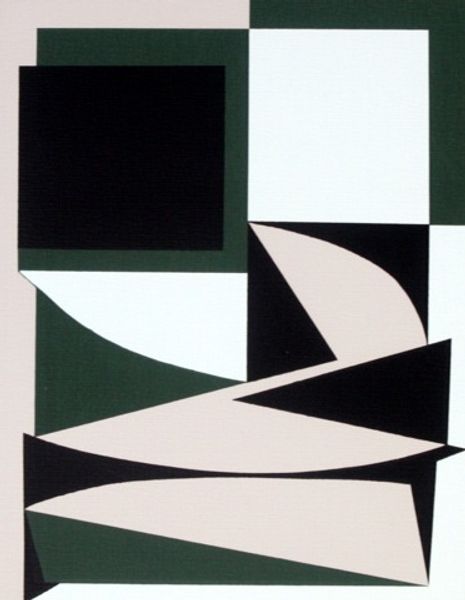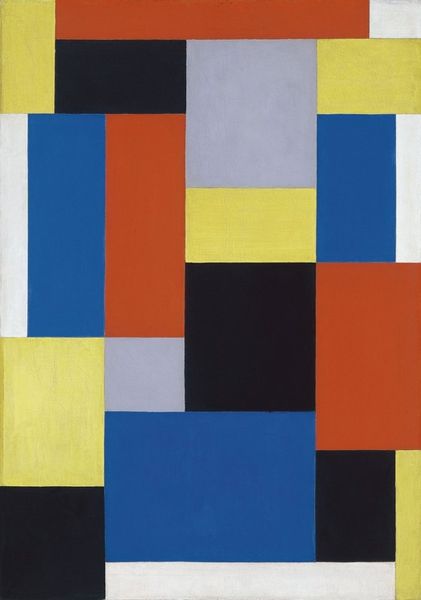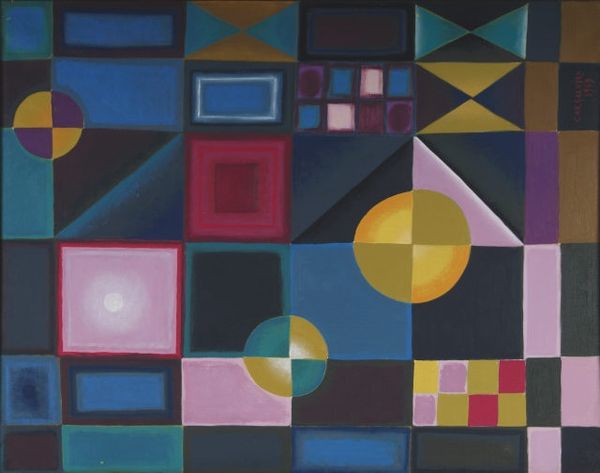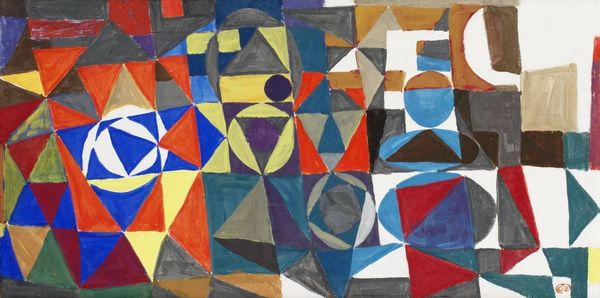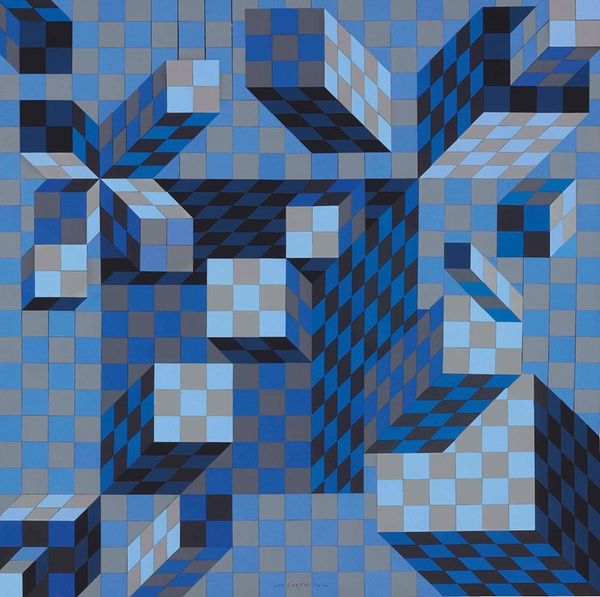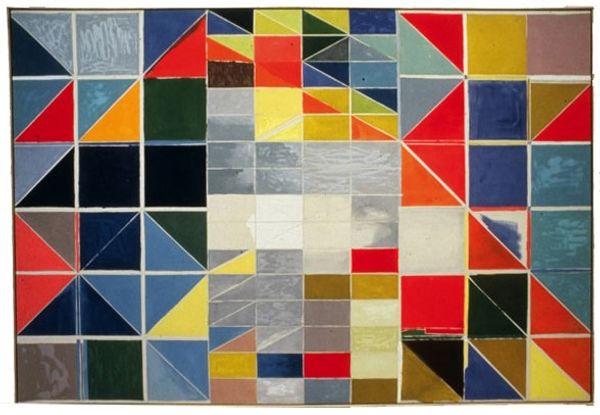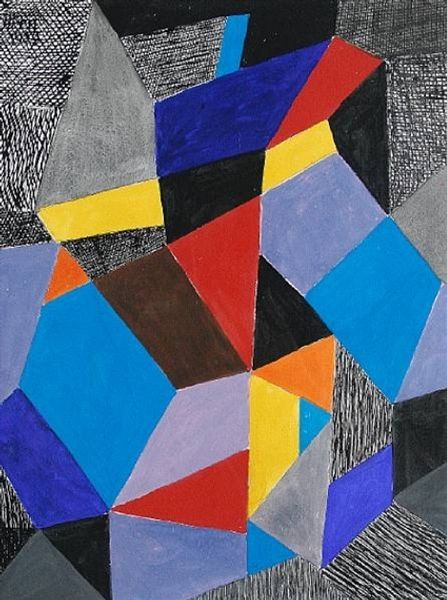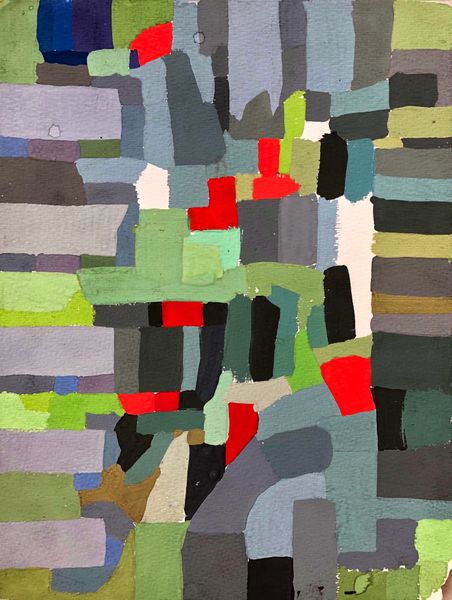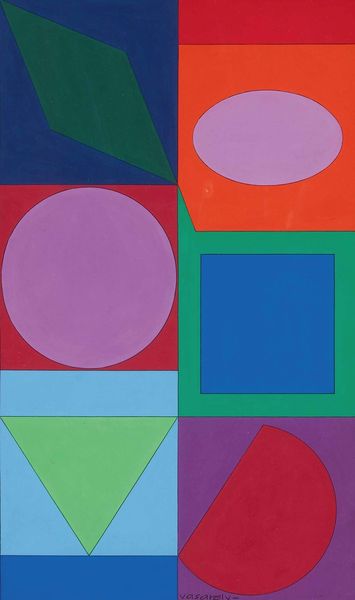
painting, acrylic-paint
#
painting
#
colour-field-painting
#
acrylic-paint
#
geometric
#
abstraction
#
line
#
modernism
#
hard-edge-painting
Dimensions: 92 x 75 cm
Copyright: Manuel Cargaleiro,Fair Use
Editor: This acrylic painting, simply titled "Sem Título," or "Untitled," was created by Manuel Cargaleiro in 1969. I'm immediately drawn to how the geometric patterns seem both ordered and playful, almost like a tile mosaic but in a distinctly modern way. How do you interpret the social significance of this hard-edge painting, considering its context? Curator: That's an insightful initial observation. The date is key; 1969 places it firmly within a period of political upheaval and social change across Europe, including Portugal. The clean lines and bold colours of hard-edge abstraction, particularly within a socio-political context, offered a kind of visual purity, perhaps in reaction to the complexities of the world. Does the repetitive geometricity suggest anything about contemporary society? Editor: Perhaps a commentary on industrialization or the increasing modularity of modern life? There’s a tension here between the hand-painted quality of the acrylic and the seemingly mass-produced aesthetic of the squares. Curator: Exactly. And Cargaleiro was working at a time when the role of the artist was being questioned, with debates about art’s accessibility and its function within society. Abstraction, like this piece, sometimes presented itself as democratic—devoid of recognizable imagery, open to interpretation, yet also critiqued as elitist. The question then becomes: Who had access to and understanding of these kinds of artistic languages? Was it accessible to a wide variety of social classes? Editor: That makes me reconsider my initial thought about "playfulness." The strict geometry takes on a different dimension when you think about accessibility and the art world's power structures. It's far more nuanced than I originally perceived. Curator: It also challenges how museums operate and how art gets valorized within particular frameworks and historical moments. It encourages us to keep questioning. We shouldn't accept our initial understanding as the full truth, but interrogate assumptions based on both form and cultural placement. Editor: This was really thought-provoking! I hadn’t considered that geometric abstraction can also carry layers of sociopolitical context.
Comments
No comments
Be the first to comment and join the conversation on the ultimate creative platform.
